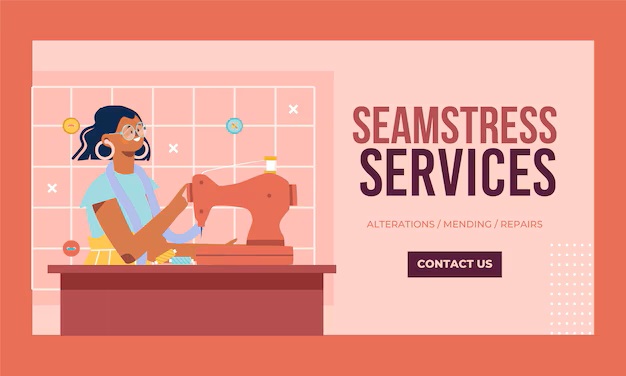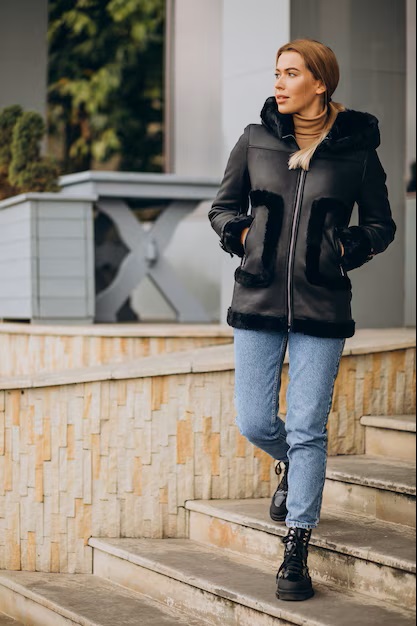Expert Tips for Mastering Sewing on the Bias
Embarking on a creative journey with fabric can open up a realm of possibilities, especially when exploring the unique properties of silk and other textiles. Harnessing the inherent stretch and flow found in materials cut at an angle can elevate your projects, transforming ordinary garments into expressive pieces of art. Understanding the potential of this technique allows for greater versatility in design and functionality.
To navigate this fascinating area of craftsmanship, it’s essential to grasp the nuances that come into play. The distinct qualities of a diagonal cut present both challenges and advantages, requiring thoughtful consideration and strategic planning. With a combination of practical knowledge and an exploration of best practices, you can unlock the full potential of your fabric choices.
As you delve into these considerations, you’ll discover that success lies not just in technical skills, but also in an appreciation for the characteristics of each material. Cultivating this insight will empower you to create garments that not only fit beautifully but also move gracefully, ultimately enriching your experience as a textile artist.
Understanding Bias Cuts in Fabric
Working with fabrics on a diagonal angle adds a unique characteristic to garments, enhancing their drape and fluidity. This technique allows for a greater range of movement and can create flattering silhouettes that hug the body in all the right places. It’s essential to appreciate how this approach interacts with the inherent properties of the material to achieve remarkable results.
When fabric is cut on the diagonal, the fibers align in a manner that enables them to stretch more easily, providing a soft and graceful appearance. This method is often employed in items like dresses and skirts, where flow and contour are desired. By understanding the nuances of such cuts, one can unlock new creative potentials, ensuring projects not only fit well but also exhibit a beautiful aesthetic.
However, it is crucial to approach these cuts with caution. The elasticity garnered through this technique can lead to challenges in pattern alignment and construction. Therefore, knowledge of the fabric type and its behavior under tension is paramount for a successful outcome. Mastering this concept will undoubtedly elevate your crafting journey.
Essential Tools for Bias Sewing
When working with fabric on a diagonal grain, having the right instruments can make all the difference in achieving professional results. An array of specialized equipment can enhance precision, ease of use, and overall success in your projects.
- Cutting Mat: A self-healing cutting mat provides a durable surface for cutting, allowing for clean edges and protecting your work surface.
- Rotary Cutter: This tool offers smooth and precise cuts through multiple layers, making it ideal for bias strips.
- Clear Ruler: A transparent ruler helps in measuring and cutting accurately, ensuring your fabric pieces maintain consistent dimensions.
- Bias Tape Maker: This device simplifies the process of creating bias tape, allowing you to achieve uniform folds and edges effortlessly.
- Walking Foot: A walking foot attachment for your sewing machine assists with feeding multiple layers evenly, preventing shifting during stitching.
- Pressing Tools: A good iron and pressing cloth are essential for shaping seams and ensuring crisp edges, crucial for working with angled materials.
Utilizing these tools can streamline your process and contribute to flawless results in fabric manipulation on the diagonal. Invest in quality items for the best experience.
Techniques for Accurate Bias Measurements
Achieving precise measurements when working with diagonal cuts is essential for creating garments that drape beautifully and fit well. Understanding the intricacies of this technique can elevate your craft, ensuring that the fabrics behave as intended. Consistency in measurements lays the groundwork for successful projects, allowing creative freedom while minimizing errors.
Using a Clear Ruler
Employing a clear ruler can significantly enhance accuracy. This tool allows you to see the underlying fabric and ensures that you align your measurements precisely. When marking, use a fabric marker that washes out easily to ensure clear visibility without damaging the material. Double-check your angles to maintain the proper trajectory of the cut.
Creating a Template
Another effective approach involves crafting a template from sturdy paper or cardboard. By establishing a template with the correct angles and dimensions, you can streamline the process of cutting with precision. Always trace around the template onto the fabric, taking care to maintain stable pressure to avoid shifting. This technique can save time and reduce the likelihood of inaccuracies during your project.
Common Challenges and Solutions in Bias Work
Navigating the complexities of working with slanted fabric can present various obstacles for crafters. Understanding these issues and exploring effective remedies can significantly enhance the crafting experience and outcomes. Below are some frequently encountered hurdles and their respective resolutions to facilitate a smoother project execution.
Typical Obstacles
- Stretch and Distortion: Fabric cut on the diagonal may stretch or warp during handling and stitching.
- Incorrect Alignments: Misalignments can lead to uneven seams and distorted shapes in the final product.
- Difficulty in Finishing Edges: Ensuring that edges remain neat and tidy can be challenging.
- Skipping Stitches: The unique properties of diagonal fabric may cause machines to skip stitches if the tension isn’t adjusted properly.
Solutions to Overcome Challenges
- Stabilizing the Fabric: Use interfacing or stabilizers to help prevent stretching and distortion during the assembly process.
- Take Your Time with Alignment: Carefully pin or baste the edges before stitching to ensure accuracy in alignment.
- Choose Appropriate Finishing Techniques: Techniques such as bias binding can help achieve clean and professional-looking edges.
- Adjust Machine Settings: Before beginning, test and modify your sewing machine’s tension settings to minimize skipped stitches.
By being aware of these common pitfalls and implementing the suggested strategies, you can improve your proficiency and enjoyment when working with slanted fabrics.
Finishing Edges for Bias Projects
Ensuring that edges are completed correctly is crucial when working with fabric cut on an angle. Proper finishing not only enhances the overall appearance of the garment but also contributes to its durability. There are several methods to consider when sealing edges, each offering unique benefits depending on the type of fabric and the desired finish.
Common Techniques for Edge Finishing
Various approaches can be employed to achieve neat edges. Below is a comparison of some popular methods:
| Technique | Description | Best For |
|---|---|---|
| Overlock Stitch | Uses an overlock machine to trim and secure edges simultaneously. | Stretch fabrics and knits |
| Bias Binding | Attaching strips of bias-cut fabric to the edge for a clean finish. | Woven fabrics and delicate materials |
| French Seam | A technique that fully encloses raw edges within the seam. | Sheer and lightweight fabrics |
| Zigzag Stitch | A simple stitch that prevents fraying while providing a decorative edge. | Basic clean finishes on woven materials |
Choosing the Right Method
The selection of an edge finishing technique should be based on both the fabric characteristics and the project’s requirements. Consider factors such as stretch, transparency, and thickness to determine the most suitable approach. A well-finished edge not only elevates the garment but also ensures longevity and aesthetic appeal.
Creative Projects to Practice Bias Skills
Exploring new endeavors can significantly enhance your understanding of working with angled fabric. Engaging in various creative undertakings not only sharpens your abilities but also leads to delightful results. Here are several imaginative projects that will help you refine your technique and confidently manipulate materials cut on the diagonal.
1. Curved Hemmed Skirt: This classic piece allows you to experiment with different silhouettes while practicing curves. The gentle flow of the fabric when cut on an angle results in an elegant drape, making it ideal for warm weather.
2. Bias-Bound Quilt: Quilt-making can be a rewarding experience, especially when incorporating bias tape. Dressing your quilt edges with bias binding gives it a professional finish while allowing you to play with innovative patterns and colors.
3. Infinity Scarf: A simple yet stylish accessory, an infinity scarf made from bias-cut fabric provides versatility. This project encourages creativity in choosing fabric textures and hues while honing your skills in handling curves.
4. Flowy T-Shirt Dress: A t-shirt dress with sleeves cut on the diagonal enhances movement and adds a contemporary touch. This comfortable garment encourages experimentation with different lengths and styles.
5. Bias Pleated Top: Create a fashionable top by introducing pleats along the bias. This intricate design will give you experience in both fabric manipulation and detailed construction, resulting in a striking addition to your wardrobe.
Embrace these projects as an opportunity to enhance your skill set and transform your fabric into stunning creations. Each endeavor offers a unique learning experience while allowing you to unleash your creativity.
Q&A: Tips for sewing on the bias
What is bias in sewing, and why is it important to understand when working with fabrics?
Bias in sewing refers to the diagonal stretch of a fabric, which runs at a 45-degree angle to the selvage. Understanding bias is crucial because it affects how the fabric drapes and behaves when sewn. When fabric is cut on the bias, it has more give, allowing for a fluid fit, which is particularly beneficial for garments that require movement or curves. Bias-cut garments often have a flattering silhouette because they hug the body’s shape, enhancing both comfort and style.
What are some tips for cutting fabric on the bias?
When cutting fabric on the bias, it’s important to first lay the fabric flat and ensure it’s smoothed out to eliminate any wrinkles. Use a rotary cutter for precise cutting and a ruler to help align the fabric at the correct angle. It can be useful to mark cutting lines using tailor’s chalk or fabric marker, as this helps maintain accuracy. Additionally, it’s helpful to use a bias tape maker for consistent bias strips. Always remember to cut extra fabric, as bias cuts may warp during handling and sewing!
What sewing techniques can help ensure that bias-cut pieces fit well and maintain their shape?
To ensure that bias-cut pieces fit well and maintain their shape, it is recommended to employ a few techniques. First, use a shorter stitch length, which provides more flexibility and helps to control the stretch of the fabric. Second, consider using interfacing for added support on more structured garments or neckline edges to prevent stretching. Finally, avoid pulling the fabric as you sew, which can distort its shape; instead, let it feed through the machine naturally. These strategies can significantly improve the outcome of bias sewing projects.
How can I finish the edges of bias-cut fabric to prevent fraying?
To prevent fraying on bias-cut edges, there are several finishing techniques you can use. One common method is to use a serger or overlock machine to finish the edges, providing a clean and finished look. If you don’t have a serger, you can use a zigzag stitch along the edges of the fabric. Another option is to use bias binding to encase the raw edges; this not only prevents fraying but adds a decorative touch as well. Whichever method you choose, finishing the edges will enhance the durability of your bias-cut pieces.
How can I find the true bias when working with a piece of fabric?
To find the true bias, you should first identify the grain of the fabric. Lay the fabric flat, then fold one corner to the opposite side, aligning the selvedges. The angle created by this fold is the true bias, which runs at a 45 degree angle to the grain.
What is the importance of seam allowance when cutting a bias cut garment?
Seam allowance is crucial when cutting a bias cut garment because it allows for adjustments and finishing of seams. Ensure you include enough seam allowance to accommodate the stretch and drape of bias fabric, preventing the fabric from being pulled out of shape during construction.
Why should I let the bias seams droop when sewing?
Letting the bias seams droop helps to ease the tension on the fabric, allowing it to relax and shape properly before finalizing the seams. This technique prevents distortion, ensuring that your bias-cut garment maintains its intended silhouette.
What are some tips and tricks for working on the bias with slippery fabrics?
When working on slippery fabrics, use plenty of pins to hold the fabric in place. Consider using stay tape along the cut edges to prevent the fabric from stretching out of shape. Additionally, try to cut and sew your pieces as quickly as possible to minimize shifting.
How do I sew from shoulder to center when working with bias cut edges?
To sew from shoulder to center, first fold the fabric right sides together. Start at the shoulder seam, sewing towards the center while ensuring the bias edges align. This technique helps maintain the garment’s shape and prevents the fabric from pulling into the feed.
What should I do to prevent the fabric being pulled into the feed of my sewing machine?
To prevent the fabric being pulled into the feed, hold the fabric slightly raised and guide it straight as you sew. Keep the tension even, and consider using a walking foot to help manage layers and maintain even feeding through the machine.
What is the benefit of using twill tape or seam binding on bias seams?
Using twill tape or seam binding on bias seams provides additional support and stability, preventing the fabric from stretching. It helps maintain the integrity of the shape and structure of your garment, ensuring a polished finish.
How can I trim down the excess seam allowance on a bias cut garment?
To trim down the excess seam allowance, carefully cut the fabric close to the stitching line while maintaining the integrity of the seams. Be cautious not to cut too close, especially on bias edges, as this may lead to unraveling or distortion in the fabric.
What techniques can I use to neatly finish the bottom edge of a bias-cut skirt?
To finish the bottom edge of a bias-cut skirt, you can hem it using a blind stitch or a double fold hem. Alternatively, trim the seam allowance, press it under, and then topstitch to create a clean finish. This helps the garment hang beautifully and prevents fraying.
How do I ensure the shape of my bias-cut garment is maintained before sewing?
To maintain the shape of your bias-cut garment before sewing, ensure that you have cut your pieces accurately and that you’re using the right seam allowance. Use a piece of tissue paper underneath the fabric to help support it as you sew, especially on curves, and avoid pulling or stretching the fabric as you work.
How do I prepare my fabric pieces for sewing a bias skirt?
To prepare your fabric pieces for sewing a bias skirt, first, lay the fabric flat and ensure you have your pattern piece aligned correctly. Cut your pieces according to the pattern, ensuring you respect the bias grain. Use plenty of pins to secure the fabric, especially at the side seams, to prevent shifting while sewing.
What is the importance of understanding bias grain when cutting fabric?
Understanding bias grain is crucial because it determines how the fabric will drape and stretch. The bias direction allows for a more fluid movement in garments cut on the bias, creating a flattering silhouette. When cutting pieces, always ensure they are aligned with the true bias for the best results.
What sewing techniques should I use when working with bias-cut fabric?
When sewing bias-cut fabric, it’s essential to use techniques that prevent stretching and distortion. Start by using a sewing machine which closely resembles a walking foot, as this will help manage the fabric layers. Additionally, consider using seam binding or twill tape to support the seams, which prevents them from pulling out of shape.
How can I avoid stretching the fabric while sewing bias seams?
To avoid stretching the fabric while sewing bias seams, guide the fabric straight through the sewing machine and hold it slightly raised. When stitching, ensure that you are sewing close to the inner edge, and avoid pulling or tugging the fabric. If necessary, you can also use a tissue to support the fabric as you sew.
What should I do before hemming the bottom edge of a bias-cut garment?
Before hemming the bottom edge of a bias-cut garment, make sure to neaten the seam edge. Trim any excess fabric, and consider using an over-edge stitch on your sewing machine to secure the raw edges. This will help prevent fraying and ensure a clean finish once you complete the hem.
What are some extra tips for successfully sewing a garment cut on the bias?
Some extra tips for successfully sewing a garment cut on the bias include using a stay tape along the edges to provide stability, and taking your time to pin the fabric thoroughly before sewing. It’s also beneficial to sew from shoulder to shoulder rather than continuing to sew in one direction, which can help maintain the shape before you even sew.



